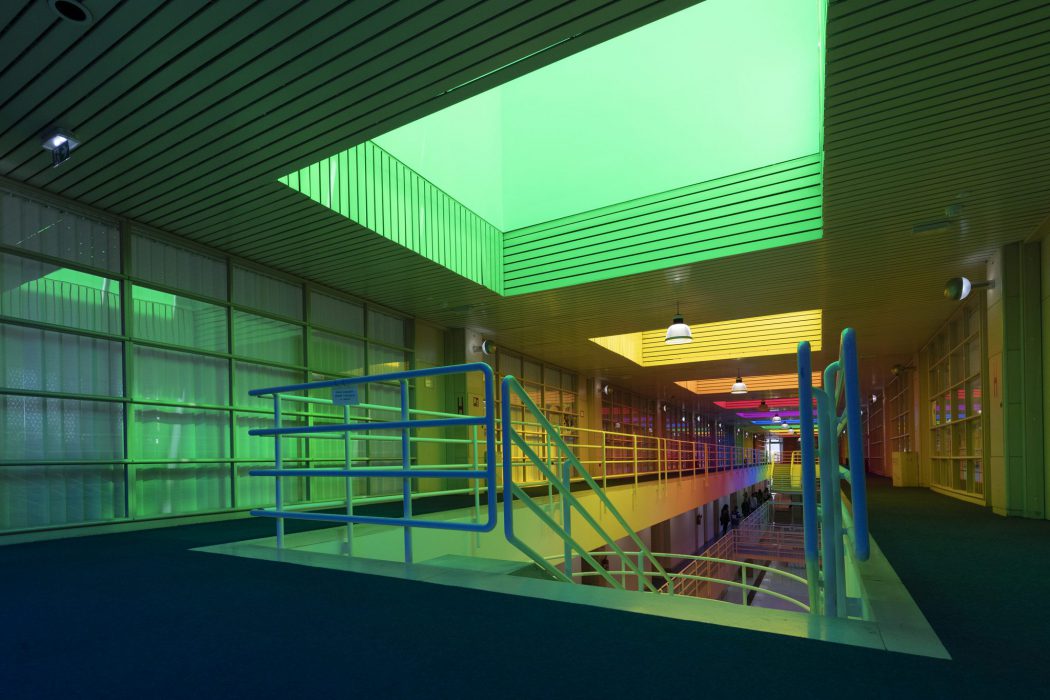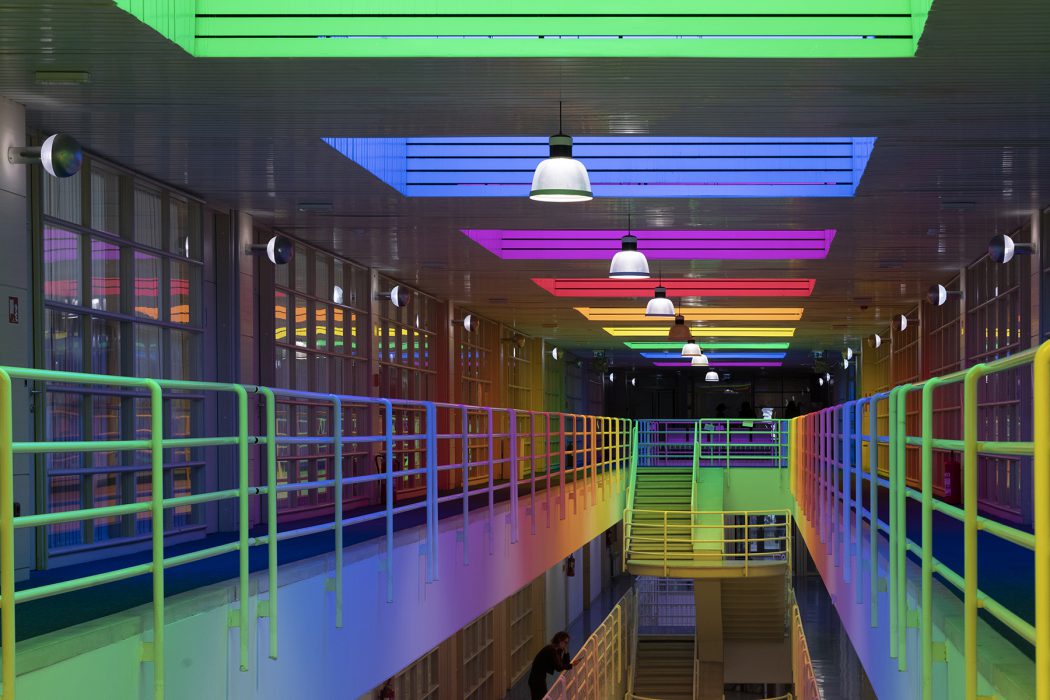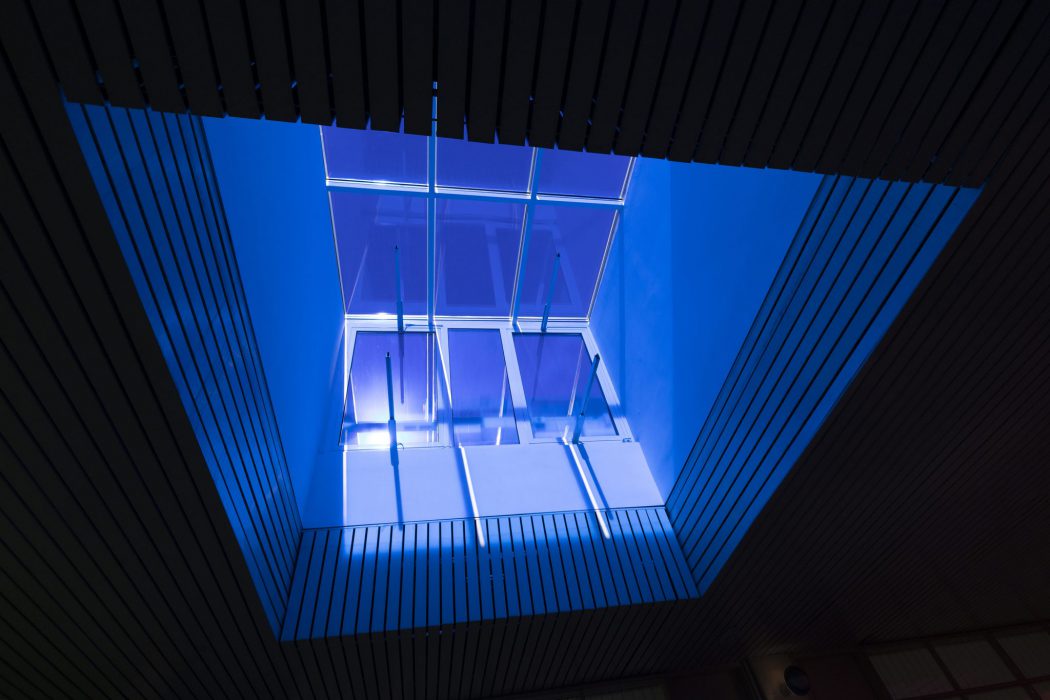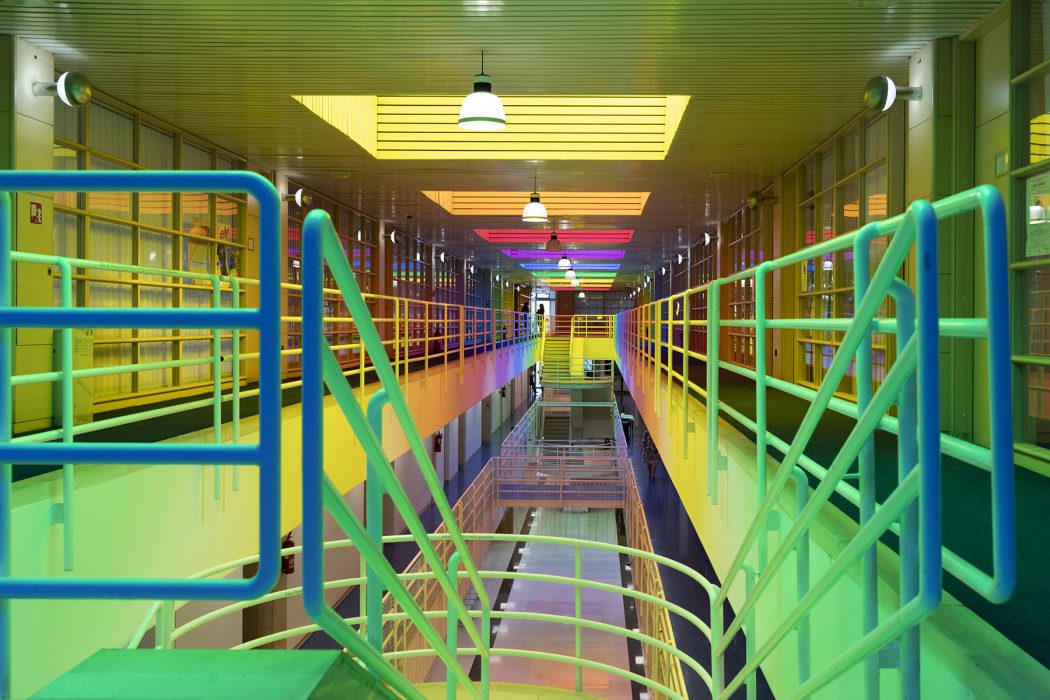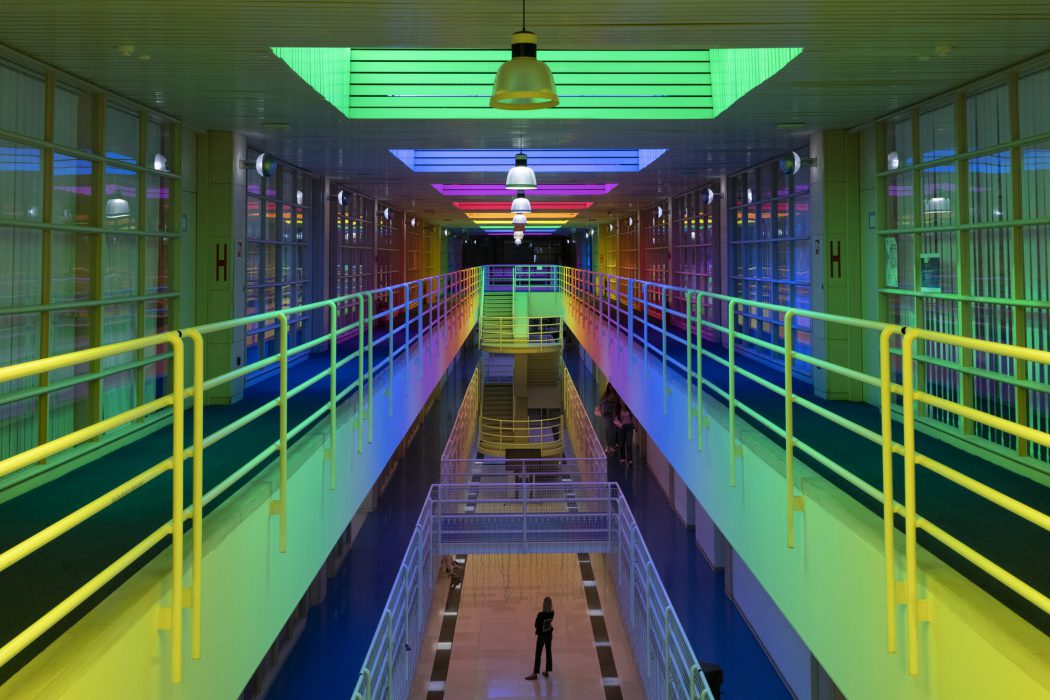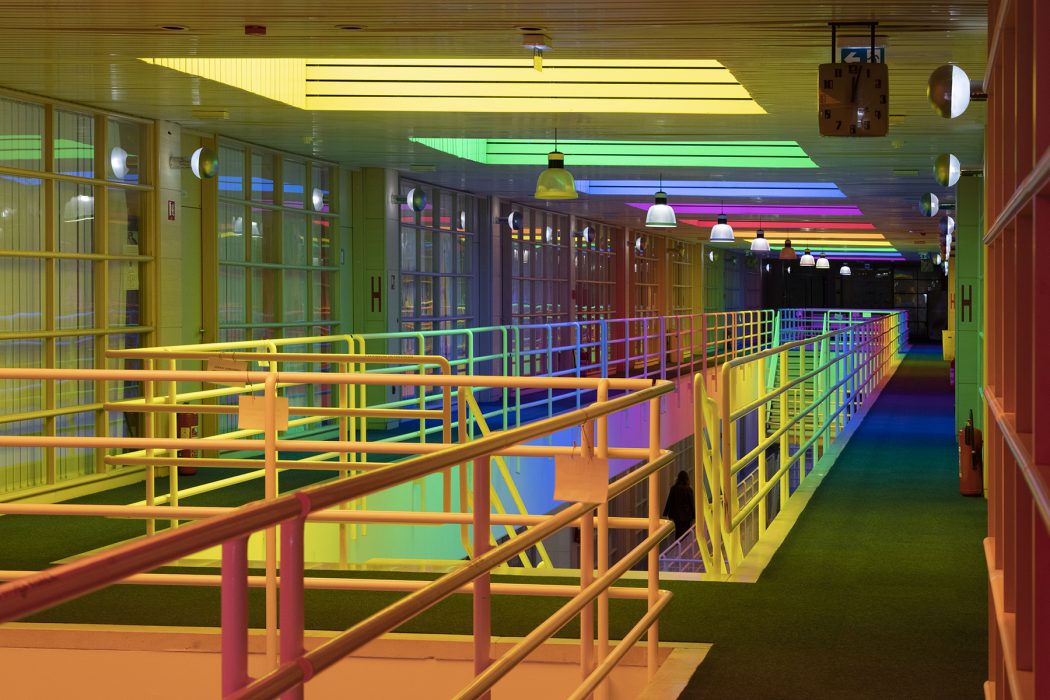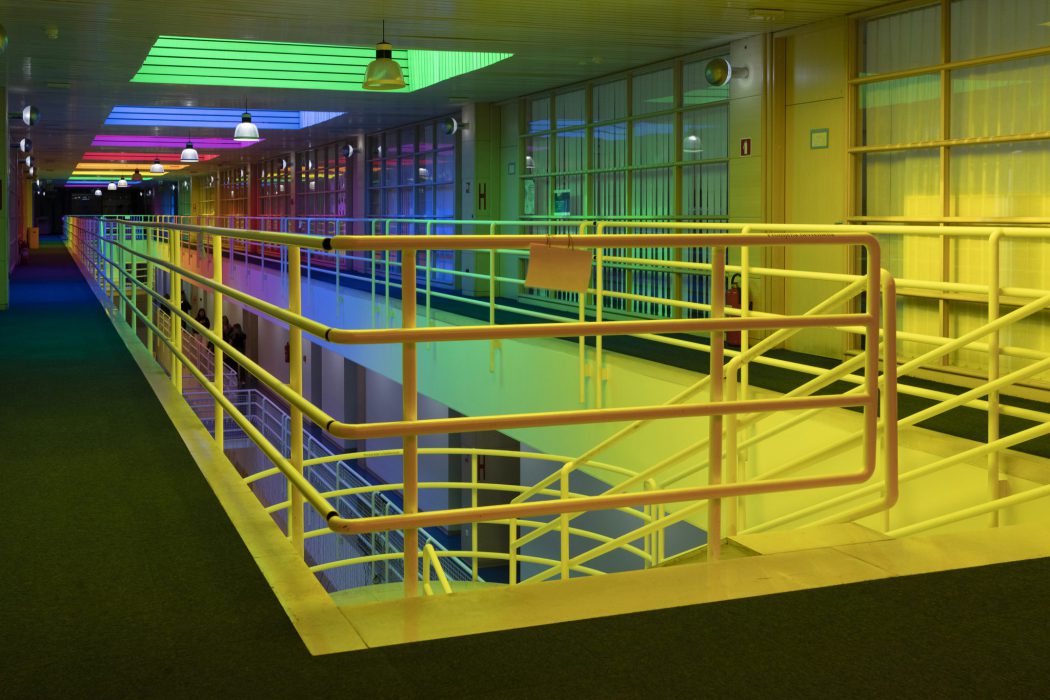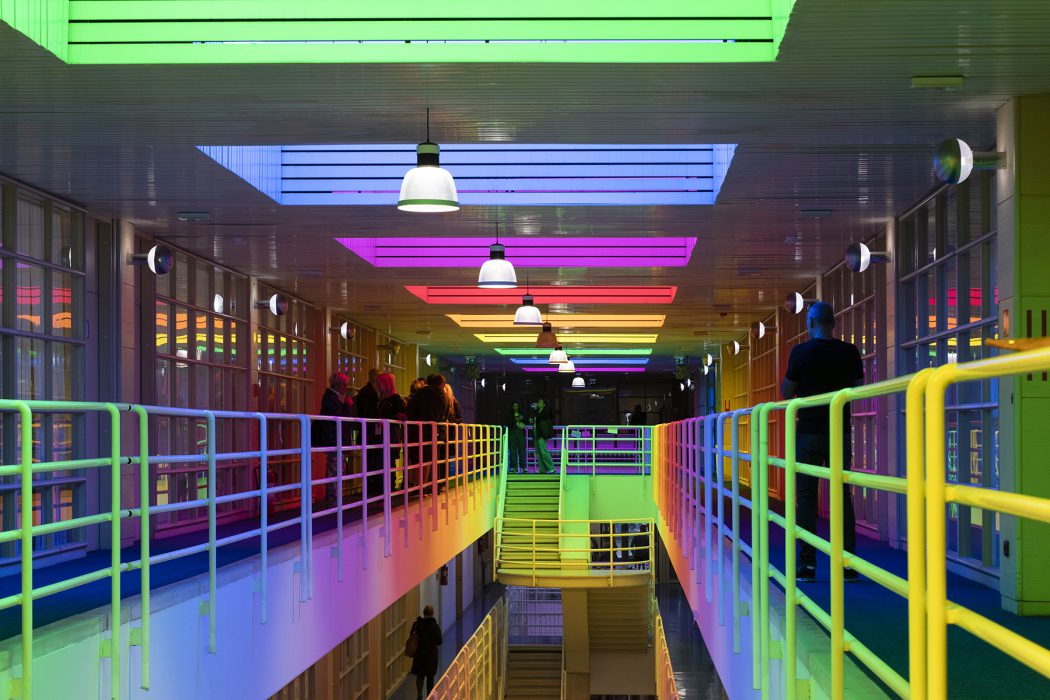All at Once by Neli Ružić calls on us not to perceive color merely as an aesthetic phenomenon but as an instrument of critical imagination, a luminous tool of resistance and hope. Placed within the framework of a humanistic institution, it reminds us that knowledge is inseparable from sensory and emotional, and that educational space is not merely a space of transmitting theory but also a space for forming sensitivity and social responsibility. Here, color appears as a crack in the normative order but also as a bridge towards possible forms of togetherness. In a time marked by crises of representation and growing social intolerance, All at Onceopens a spectrum of experiences that encompass vulnerability and strength, sorrow and resistance, emotion and dialogue. Color, in the hands of the artist, becomes a critical gesture, an invitation not only to see but also to listen more deeply to the social pulse and to imagine a shared space yet to come. In this, Itten’s didactic intent regarding color as a tool for shaping sensitivity and awareness, is once again reflected. But whereas his pedagogy was aimed at Bauhaus students, Neli Ružić expands the field of action: her color addresses the entire community, transforming the institution of knowledge into a space of emancipation and collective affectivity.
* excerpt from the curatorial text by Dalibor Prančević
All at Once: Color as an Affective Statement in the Work of Neli Ružić
In contemporary artistic production, colors increasingly transcend the boundaries of a mere aesthetic device and become the active agent of meaning; bearer of affective shifts and transformations. This is not about color as a decorative component, but rather as a medium that transforms space, introduces experience, and opens the possibility of different ways of seeing.
Historically, in the Western European artistic tradition, color passed through strict hierarchies: from the Renaissance debate on the primacy of disegnoversus colore, through modernist rationalisations, to its expressive liberation in, for instance, color-field painting. Within this context, Neli Ružić consciously assumes a stance of divergence: she acknowledges these genealogical lines but simultaneously subverts them, introducing into them affective memory and social commentary. For her, color is not simply a representational tool but a medium in which crises of personal identity and the broader social fabric are reflected.
Such an approach is clearly recognisable in her work All at Once, realised as a spatial intervention in the skylights of the Faculty of Humanities and Social Sciences in Split. The very location is not accidental, as the institution symbolises critical thinking, humanistic inquiry, and the production of knowledge in the social imaginary. By introducing primary colors: red, blue, and yellow, and their secondary derivatives into the architecture of the Faculty, the artist constructs a spectral whole that encompasses the fundamental relations of color. In doing so, the Faculty’s architecture is transformed into a kind of chromatic laboratory, a space where colors do not appear in isolation but enter into a constant interplay of contrast and complementarity. This laboratory recalls the didactic experiments of Swiss artist and pedagogue Johannes Itten, in which color was a field for exploring relations of perception, affect, and bodily experience. Neli Ružić translates these experiments into a social and institutional context, showing that color can function just as powerfully within a space of knowledge as in an art studio. At the same time, she performs a semantic reversal, transforming the space of theory and discourse into a field of affective experience, where visual perception becomes inseparable from social implications. The light that passes through color, ceases to be a neutral optical phenomenon. It is transformed into a medium of critical sensitivity, a means of illuminating differences, destabilising hierarchies, and brings into presence what is otherwise repressed or unseen. In this way, the architecture of an institution dedicated to humanistic and social reflection becomes an active interface between knowledge and emotion, between the space of education and the space of possible emancipations.
It is important to note that Neli Ružić has recently returned to Itten’s seminal work The Art of Color, one of the fundamental theoretical anchors for understanding color in twentieth-century art. She is particularly inspired by his observations on the mosaic masters of Ravenna, who in the fifth and sixth centuries achieved striking variations by relying on the action of complementary colors. In the Mausoleum of Galla Placidia, for example, the blue surfaces of wall mosaics are illuminated by orange light entering the sacred space through narrow alabaster windows. Since blue and orange are complementary colors that merge perceptually into grey, the space is filled with a marvellous grey light of changing intensity, depending on the viewer’s movement and the angle of incoming light. For Itten, this phenomenon demonstrates how color and light are not static but, in their interplay, become a dynamic experience of a space. Ružić similarly relies on perceptual instability. Her interventions are not stable images but experiences that depend on the viewer’s position, the passage of light, and the time of day. While Itten finds in Ravenna a point of departure for understanding the historical dynamics of color, Ružić translates this dynamic into the contemporary institutional space, revealing how similar optical-affective processes can be activated within the contexts of education and social dialogue. Even more importantly, Itten emphasises in his analyses the physiological effects of color. For example, cool tones such as blue-green evoke a sensation of lower temperatures, while warm tones such as red-orange create an impression of warmth and can even stimulate circulation. It is along these lines that we may also interpret Ružić’s work. Color is not merely an optical layer of architecture but also a physiological stimulus, affecting the body as much as perception. If Itten shows that cool and warm tones provoke diverse bodily reactions, the artist translates these effects into collective experience, into an atmosphere that transforms how a community perceives its educational space. This confirms that color is much more than visual appearance; it is an agent that simultaneously shapes perception, emotions, and the embodied experience of space.
Furthermore, this spatial gesture at the Faculty of Humanities and Social Sciences in Split inscribes itself into the continuity of Neli Ružić’s artistic practice, in which color acts as a means of resistance, self-recognition, and emancipation. In her performative work Sunbathing in Colors, realised at the Protiron Gallery in 1997, the artist exposed her own body to color in an act stemming from the experience of solitary pregnancy and the anticipation of life as a single mother. This experience of vulnerability and uncertainty did not remain confined to the private sphere but became a paradigmatic example of the relation between limitation and freedom, between constraint and possibility. The colors that covered the body, were triggered by anomalies within a regime of social condemnation, but they transformed into a sign of hope, into the possibility of opening a space for multiple identities and affective dissonances. In All at Once, the colors shift from body to architecture, from the personal to the collective, while retaining their force and persistence. A similar process of “coloring” was employed in her spatial intervention and video work The Stolen Future(2014/2015), where Ružić illuminated the abandoned pavilions of Ivan Vitić’s motel in Trogir with light and color. The devastated modernist complex thereby acquired new visibility, with color appearing both as an invocation of modernism’s utopian promises and as an indication of the entropy of the transitional period. The Stolen Futurethus opened a space for imagining different scenarios, in which the immateriality of light evoked “past futures” and possible alternatives to the present.
In the wake of these experiences, All at Onceby Neli Ružić calls on us not to perceive color merely as an aesthetic phenomenon but as an instrument of critical imagination, a luminous tool of resistance and hope. Placed within the framework of a humanistic institution, it reminds us that knowledge is inseparable from sensory and emotional, and that educational space is not merely a space of transmitting theory but also a space for forming sensitivity and social responsibility. Here, color appears as a crack in the normative order but also as a bridge towards possible forms of togetherness. In a time marked by crises of representation and growing social intolerance, All at Onceopens a spectrum of experiences that encompass vulnerability and strength, sorrow and resistance, emotion and dialogue. Color, in the hands of the artist, becomes a critical gesture, an invitation not only to see but also to listen more deeply to the social pulse and to imagine a shared space yet to come. In this, Itten’s didactic intent regarding color as a tool for shaping sensitivity and awareness, is once again reflected. But whereas his pedagogy was aimed at Bauhaus students, Neli Ružić expands the field of action: her color addresses the entire community, transforming the institution of knowledge into a space of emancipation and collective affectivity.
Dalibor Prančević
